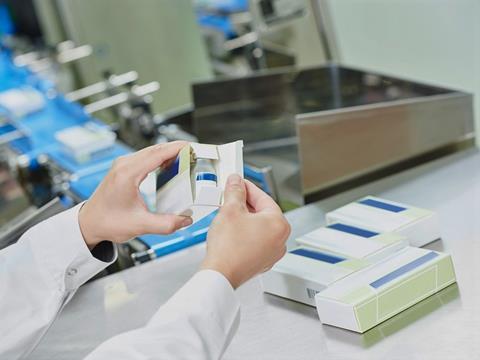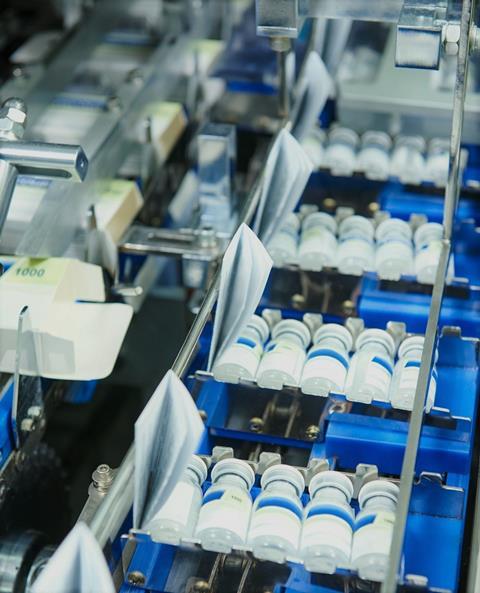
As MIT’s Sanjay Sarma pointed out in his keynote talk at NEXUS 17, initially unheralded shifts in the world’s architecture have stood behind most of the seismic technological changes of modern times, from the invention of alternating current to the development of the highway system that bypassed cities, and from the introduction of cellular telephony to packet switched networks in communications. The world is built around largely unnoticed, often counter-intuitive architectural choices – and the consequences tend to far outstrip the imaginations of those who make them. Thus is the world of pharma and healthcare destined to be transformed by serialisation and the Internet of Things (IoT), and the networked, cloud-based architecture supporting them. Tim Sykes reports from Barcelona on the challenge for the pharmaceutical supply chain and the implications for packaging.
Regulatory compliance has undoubtedly been the immediate driver of serialisation, and security the initial objective. However, the broader context of the IoT suggests a more radical disruption. Voice interfaces such as Amazon Echo are already connecting the consumer to a digital world that processes inconceivable volumes of supply chain data at high velocity. The IoT represents a chance, in the words of Sanjay Sarma, for the pharma industry to move beyond compliance.
Beyond compliance
These possibilities were elaborated by another speaker at NEXUS, Dr Bertalan Mesko, the self-styled Medical Futurist. He outlined a vision of future healthcare in which the individual is empowered by access to their own medical data, gadgets and apps that translate this into usable information, and by customised pharmaceuticals delivered securely and dispensed accurately by smart packaging. Dr Mesko depicted a near future utopia – acknowledging the need to guard against its dystopian shadow – in which existing disrupters such as artificial intelligence, 3D printing, microchipped pills and augmented reality are part of everyday interactions with healthcare.
Indeed, a recurring theme among the speakers and delegates was that if pharma manufacturers and their suppliers are excessively preoccupied with the short-term goal of securing compliance with the EU Falsified Medicines Directive, they risk missing out on enormous opportunities to shape the landscape. As TraceLink CEO Shabbir Dahod said, those involved in serialisation today should be already thinking about the next, revolutionary step of facilitating real-time information sharing throughout the supply chain to achieve better patient outcomes.
TraceLink’s own contribution to this resides in building platforms – the physical platform of NEXUS 17, at which the supply chain assembled to swap ideas, as well as the serialisation solutions at the core of its business. Speaking to Packaging Europe, Jean-Marie Aulnette (VP EMEA Sales, TraceLink) commented, “Our proactive task is to connect entities. The purpose of our solutions is to provide access to data to everyone in the supply chain, enabling all of our customers to access their data using the tools they require to make sense of it. Obviously, there are lots of opportunities to leverage data, wherever it can be collected. For instance, relating to temperature control across the supply chain. As we know, this information can also be extended to the end consumers.”

Onrushing deadlines
For all the blue skies talk of ‘beyond compliance’, however, we should not lose sight of the fact that readiness for EU FMD, which comes into force in 2019, is item number one on the agenda for the European pharmaceutical supply chain.
“It’s scary!” said Mr Aulnette. “Some CMOs have been preparing for a long time but many have been afraid to open their eyes, due to the costs and complexities involved. But if they don’t start now, they will be in trouble. The process of achieving compliance is longer than you might imagine. Companies need to formulate their approach, then order solutions, then install them across their packaging lines – and then have the new systems validated.”
The serialisation challenge is of course not just about a contract manufacturer or packaging line adapting its own equipment. It involves integrating the whole spectrum of suppliers and logistics solutions within a supply chain, each of which may develop their own data protocols, and for exporters satisfying the regulatory environment in each market.
TraceLink in fact used NEXUS 17 as an opportunity to respond to the demand for connectivity with the launch of an industry first: a new, integrated Compliance and Digital Information Platform for pharmacies with EU FMD requirements. The mobile and web-based application enables any pharmacy in the EU to easily comply with verification and decommissioning requirements under the FMD while simultaneously delivering a real-time dashboard for business insights on medicine scans, expiry dates, dispensation trends, product inventory and more. The new platform provides a single destination for pharmacies to meet their EU FMD requirements, which take effect in February 2019. Pharmacists who use the application will also benefit from user-friendly dashboard analytics that provide valuable insights from all transaction information that is captured within the application.

Pharmacists can also opt in to a service within the app that links them to participating pharmaceutical manufacturers, paving the way for a new digital communication channel designed to enhance the information-sharing between pharmaceutical companies and the healthcare providers who dispense their medications. Once they opt in, pharmacists will be able to receive specific and contextual pharmaceutical product information directly from the manufacturer – including details about indications, usage, best practices for product administration, and potential warnings and precautions - empowering them to deliver a more engaging and informative consultation as they dispense medicines to patients.
Packaging implications
Packaging is central to all of these discussions. It is the medium for serialisation codes, applied on refitted packaging lines that themselves communicate with the integrated network connecting the supply chain. One of the immediate challenges for the packaging line is space: can serialisation equipment physically fit into the existing line? Perhaps the second consideration is how packaging can play its part in delivering the added value made possible by the architecture of IoT. The serialised supply chain is a perfect platform for late-stage customisation, and for active and intelligent packaging solutions that give patients greater information about the provenance of their pharmaceuticals and the conditions in which it passed through the supply chain. There are opportunities to develop packaging solutions that both communicate with the cloud to determine the optimal dose and dispense it with accuracy and convenience.

Stepping back from the futurology, perhaps it’s important to recollect the core role of packaging as a protective medium. Despite the digital world that changes how we relate to packaging, physical protection against counterfeiting and tampering is as important as ever. Counterfeit medicine has been estimated as a €10 billion industry in Europe alone, with criminals using ever more sophisticated converting equipment.
Dr Jean-Marc Bobée, until recently head of anti-counterfeiting at global healthcare leader Sanofi, told Packaging Europe that a combination of security technologies is advisable. “I tend to advocate a mixture of overt and covert authentication features. The covert technologies protect the company, while the overt ones protect the patient. Serialisation is an important step for providing verification across the supply chain but it’s not sufficient in itself to guarantee security. The onus at company level is on implementing effective tamper-evident and anti-counterfeiting solutions.” In Sanofi’s case this involved the use of tamper-evident labels and adhesive systems, rather than mechanical systems.
Dr Bobée also pointed out that for all the high-tech possibilities, reality dictates that any new packaging solutions are cost-effective. “In Europe we have an ageing population, and meeting its growing healthcare demands will be an economic challenge. Therefore, we have to be very careful about escalating the costs by moving too quickly in the direction of smart and responsive packaging systems. Some of the technologies envisaged strike me as perfect for clinical trials, where data feedback is valuable, but at high volumes can the market sustain them?”

Similarly, the median consumer may not wish to rush along the inevitable journey into digitally-enhanced healthcare. “There are some calls to eliminate the information leaflet from pharmaceutical packaging,” Dr Bobée continued. “However, not everyone uses apps. I believe we need to take a step by step approach to innovation. It’s important to nurture that guarantee that everything is run effectively across the supply chain. Otherwise you risk losing credibility. Packaging must be universal, efficient and affordable. The task is to protect the maximum of products at the minimum cost – not to build a cathedral.”
The coming years will be a critical period for CMOs and packaging technologists looking to exploit the opportunities beyond serialisation, and delivering them in a scalable, viable format that meets the market’s bottom line needs.










